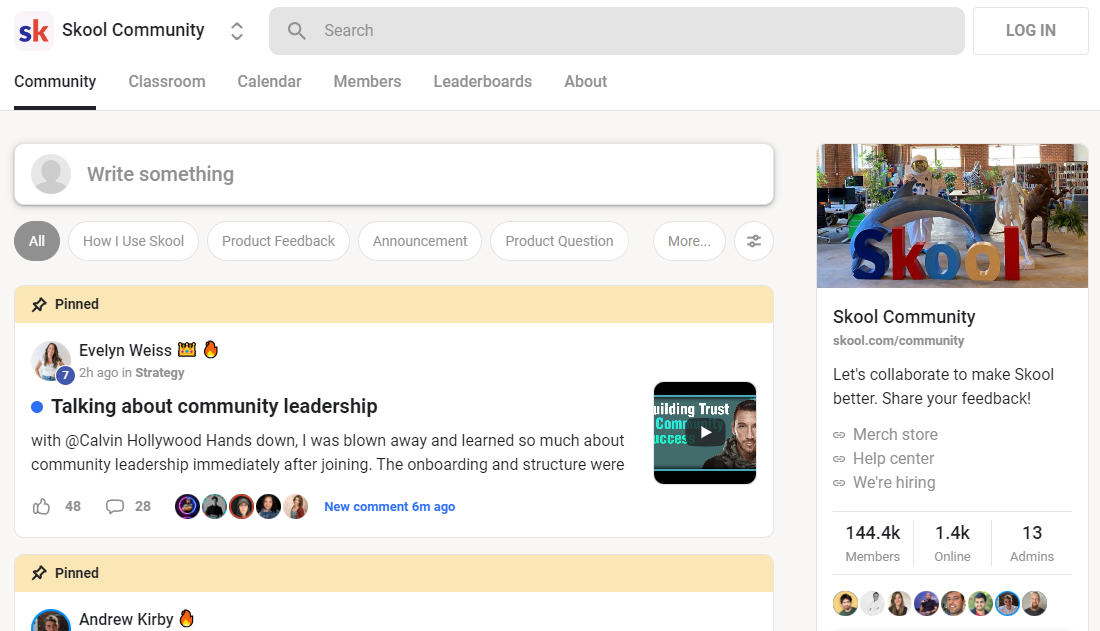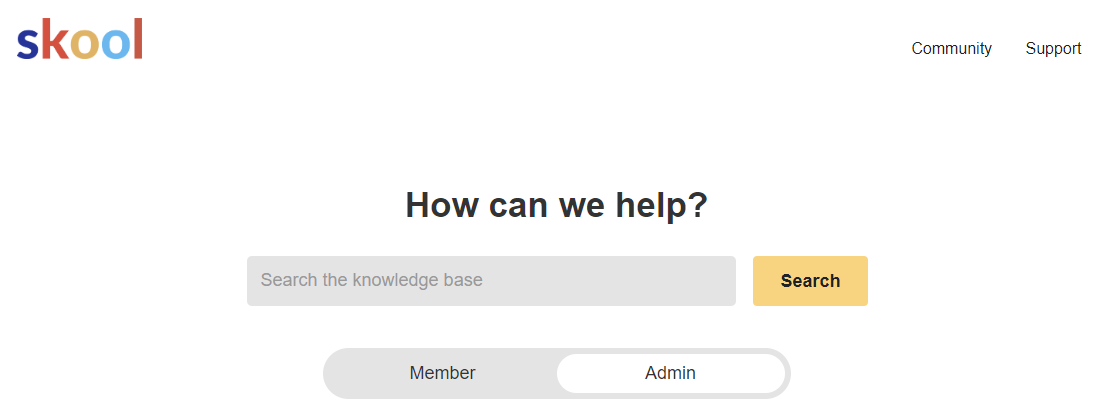Skool offers best-in-class gamification features that improve interaction. As an example, participants can make levels based on their involvement, which open program web content and other benefits that additionally inspire them.
Previously, developers needed to use various tools for holding courses, constructing communities and handling e-mail advertising. This created a disjointed experience for both developers and their target markets.
Creating Courses
Skool has a straightforward, user-friendly interface and prioritizes area structure and program organizing over various other functions. It enables designers to produce a lively neighborhood for their courses and training programs by linking them with the right audience. This also helps them monitor the health of their web content business with the help of a simple dashboard.

To start, an individual can enroll in a totally free 14-day trial of Skool. After that, they can pay $99 a month for the platform to organize a single community. There are no other rates options available for the moment. Skool also processes settlement and pays designers weekly, but it does bill a 2.9% purchase fee.
One of the distinct aspects of Skool is that it can be made use of to create interactive training courses. These can include live webinars, team jobs and real-time conversations. These sorts of training courses motivate participation and rise training course conclusion prices. In addition, Skool’s gamification attributes help to motivate neighborhood involvement. As an example, members can earn points and unlock course material when they reach certain levels in the neighborhood.
Users can additionally utilize the social eat Skool to publish updates and engage with others in the neighborhood. The feed appears like a Facebook group, however with a more regulated method of posting. This helps to prevent the kind of spam and misuse that occurs on other social platforms.
Taking care of Communities
Skool is an extremely simple system to make use of, for both members and admins. Its simpleness is among its major marketing points– when a person joins your community they won’t be confronted with a lot of alternatives or features that can thwart their experience and confuse them.
The platform starts off as a personal group by default, however you can conveniently transform this to open your area to anybody that you intend to belong to it. When you’ve done this you’ll see a social feed like you would on Facebook Groups or WhatsApp (yet without all the rip-off stuff and swearing).
You can additionally add a classroom tab to your area that you can make use of to share educational content with your participants. This feature is specifically useful for neighborhoods that are focused on knowing or expert development as it aids to develop an instructional structure and makes it very easy for members to track their progression. In addition, the system has gamification aspects that allow participants to gain points by suching as posts or remarks. When they get to a certain level they can unlock resources, such as training courses, even more driving involvement.
The other trendy thing is that Skool has a mobile app, much like Mighty Networks or Slack, so members can stay on top of your area and interact on the go. This is a wonderful method to motivate and involve your participants and to help them get assistance from each various other when they require it, as opposed to just turning to you for responses.
When Did Skool Launch
Skool focuses on gamification, permitting customers to gain points and badges for their contributions. This motivates members to involve with the area and add to discussions. Consequently, this helps them level up and unlock advantages like videos and other content. Admins can also establish training courses to be unlocked at certain degrees to additional drive involvement.

The Skool user interface is very clean and user-friendly. Its highlights consist of the Community tab, which looks much like a Facebook team feed. Here, customers can publish remarks and text along with upload pictures, links and videos. Participants can likewise watch each others accounts and get in touch with them. In addition, individuals can produce personal teams in the community to discuss certain topics.
One more attribute of Skool is the Classroom tab, which is similar to a YouTube livestream or Zoom conference. Utilizing this, administrators can host trainings and webinars for their pupils. They can also include occasions in the schedule to stay upgraded on upcoming events and When Did Skool Launch.
Nevertheless, some facets of Skool could make use of enhancement. For instance, the system isn’t adaptable when it involves money making as users can not provide several prices tiers for their courses and area subscriptions. In addition, the tool lacks an email marketing function, which may be an offer breaker for some program designers. It also doesn’t have indigenous video clip hosting, meaning that customers require to utilize exterior platforms like YouTube, Loom and Vimeo for their video clips.
Including Content
The procedure for including material and interacting with members on Skool is very easy and uncomplicated. Admins can create articles with text, GIFs, videos and surveys. They can additionally include event calendars to notify area participants of upcoming group Zoom calls or live streams. In addition, they can make use of Skool’s e-mail broadcast feature to send a message to the whole neighborhood with a solitary click. This removes the requirement for identifying and list division, which can be difficult.
In addition, Skool’s gamification functions can boost involvement and customer retention. It urges members to engage with the web content on a regular basis by rewarding them with various benefits. These include opening course material, gaining points and making a place on community leaderboards.
While Skool provides a host of valuable attributes for creating and delivering on-line courses, it’s not for everyone. The system is best for trainers, consultants and various other details business owners. However, the price can be a barrier for some people wanting to monetize their on-line material.
Furthermore, the lack of fundamental tiers and a short free trial might be a deterrent for numerous. Additionally, the platform’s laser-focus on eLearning can make it less desirable for people who intend to sell various other digital items. Nevertheless, despite these downsides, When Did Skool Launch is still a practical alternative for anybody wanting to create and generate income from on the internet programs.